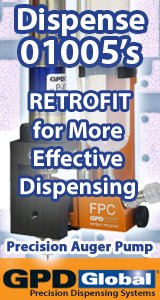Analytical Instrument are a large class of instrument used for analytical applications in chemical, pharmaceutical, clinical, food-processing laboratories, oil refineries and many other field. The instruments help in analyzing materials and establishing the composition.
pH Meter
pH Meter is one the analytical instrument. It is an electric device used to measure hydrogen-ion activity (acidity or alkalinity). The lower the pH value of a substance, the higher the acidity. The pH electrode of the pH meter contains a neutral solution with a pH of 7. pH meter measures the pH level of substance by measuring the hydrogen-ion activity. Some of the hydrogen ions move toward outer surface of glass electrode and replace some of the metal ions inside it. This ion-swapping process called ion exchange.
Different amount of ion-swapping takes place on two sides of glass, which means different amount of electrical charge builds up. This charge difference means a tiny voltage appears between the two sides of the glass, which produces a difference in voltage between the silver electrode and the reference electrode that shows up as a measurement on the meter.
Even if the meter is measuring voltage, the digital display shows the pH measurement
ORP
Oxidation-reduction potential (ORP) on the other hand is not an analytical instrument but is the measurement that indicates how oxidizing or reducing a liquid is. Oxidation is the loss of electrons, so oxidizers accept electrons from other molecules, where reduction is the gain the electrons, so reducers donate electrons to other molecules. In short, ORP is measurement of cleanliness of of the water and its ability to break down contaminants.
ORP is measured using an electrochemical sensor called an ORP sensor. Similar to pH sensors, most common type of ORP sensors is a combination sensor with a measuring electrode and a reference electrode. The measuring cell, typically a noble metal like platinum or gold, detects changes in ORP potential, while the reference provide a stable comparison signal. Like a pH measurement, an ORP measurement is not a direct indicator of concentration, but rather an indicator of activity. However, in solutions with one active species, like pool water containing chlorine, ORP correlates to concentration.
Many Analytical Instrument for measuring pH and ORP is available through Quick Time Engineering Inc.
Conductivity Sensors/Transmitters
Conductivity transmitter is a device used to measure the amount of electrical current in a solution. This are extremely important to many industrial processes especially in food and beverage, pharmaceutical and chemical industries.
Conductivity transmitter are used to measure the electrical conductivity in industrial processes where a liquid is utilized. Typically, they are used as a way to measure changes in wastewater procedures at water treatment plants and are also common in any water treatment or monitoring application as well as in scientific and environmental laboratories.
Conductivity transmitters are equipped with a probe for on-site measurements. The probe is placed into a liquid, the transmitter activates a voltage between two electrodes within the probe. The intensity of the current depends on the number of the medium’s free anions and cations that move between the two electrodes. The freer anions and cations the liquid contains, the higher the electrical conductivity and the current flow.
The conductivity transmitters selection depends on the application and the conductivity range. In order to measure low conductivities in pure and ultrapure water, choose conductive sensors. Use toroidal sensors in media with high conductivity (e.g. milk, beer, bases, acids, brine) and apply 4-electrode sensors where a wide measuring range is required (e.g. phase separation).
There is two type of conductivity sensors/transmitters, inductive conductivity sensor and contacting conductivity sensor. Inductive Conductivity Sensor use two electromagnetic coils (usually encased in a polymer ring) to measure the ability of a solution to conduct an electrical current. Alternative voltage is applied to the driving coil, a voltage is induced in the receiving coil. The induced current is influenced by the conductance of the solution. Inductive conductivity sensors can be used in aggressive environments, but they are not suited for conductivities below 15 µS/cm.
Contacting conductivity sensor consists of conducting electrodes (in direct contact with medium). The conductivity of the solutions can be measured by multiplying the measured conductance by the cell constant corrects for the individual properties of the sensor. The cell constant is determined in the factory and entered into the associated conductivity meter or converter. System can be calibrated when installed.
Conductivity Sensors/Tramsnitter are available through Quick Time Engineering Inc
Quick Time Engineering Inc is an international company with offices and distribution networks in the USA, Hong Kong, Europe and Malaysia.
In its 20 years of operation since 1998, Quick Time Engineering Inc had emerged from a local engineering company with a single staff that provided solutions in factory automation to become nowadays a company that serves the Oil & Gas industries, EPC contractors, System Integrators and other industrial automation and process control companies worldwide. Customers from over 50 countries worldwide trust us with their need for process control instruments and industrial automation products.
For more information about Quick Time Engineering Inc , visit www.quicktimeonline.com or email enquiry@quicktimeonline.com






